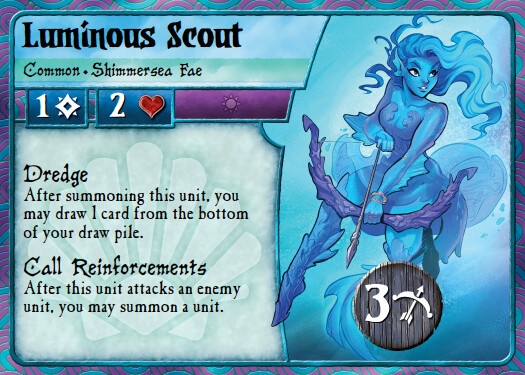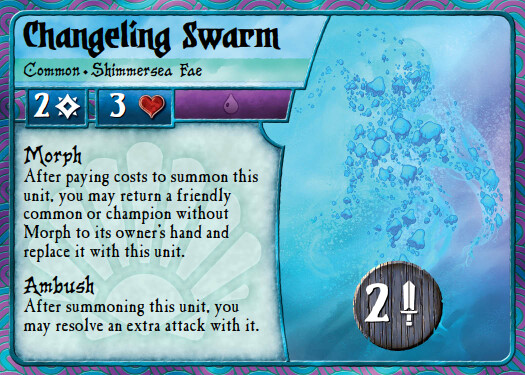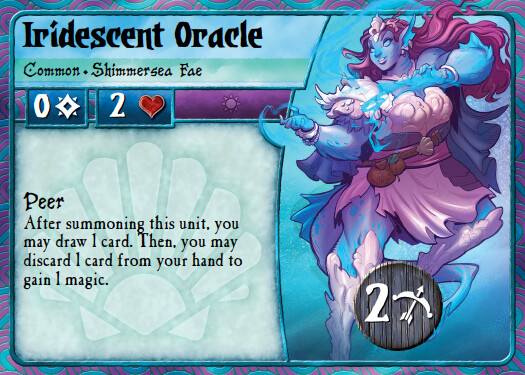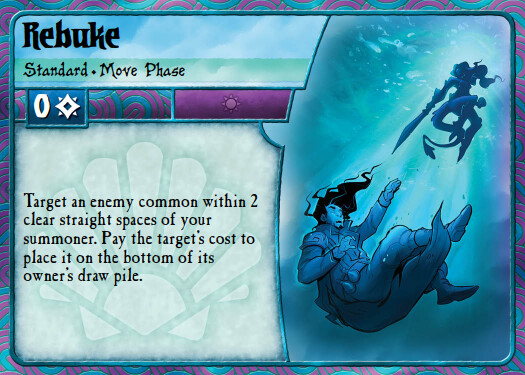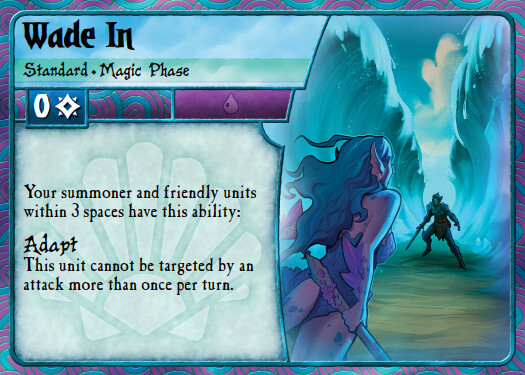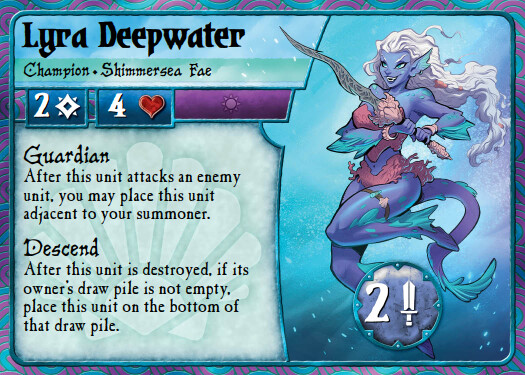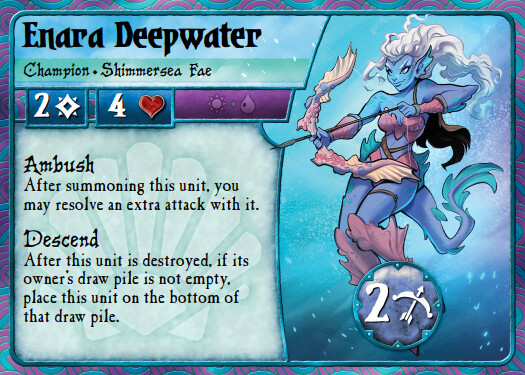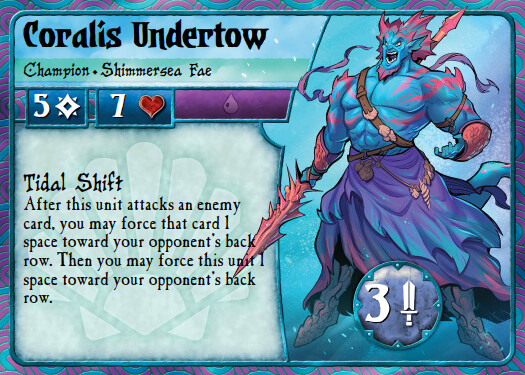Scouts are the engine behind most of the faction’s tricks, making them essential to your strategy. It’s crucial to aim for summoning all four Scouts in every game, or even more, thanks to Swarm returning them to your hand. While it’s occasionally acceptable to discard a Scout in the first turn to maintain hand flow, they’re too integral to your plays to discard lightly.
One reason gates are so crucial to the faction is their synergy with Scouts. After building a Gate, you can summon a unit from it during the attack phase to seize key positions, shield your Scout or summoner, or perform a variety of tactical moves.
The Scout’s utility also eliminates the need for the Shimmersea Fae to rely on flanking for multiple attacks. By attacking with a Scout, summoning a unit from a nearby Gate, and then attacking with the summoned unit, you can maximize your attack count each turn, all while keeping your Scout protected..
In addition to being central to the faction’s tricks, Scouts provide tempo advantage by drawing a card from the bottom of the deck. This not only helps you find the pieces you need but also enables you to cycle back your two champions, Lyra and Enara, through their Descend ability, ensuring they return to the battlefield when needed.



